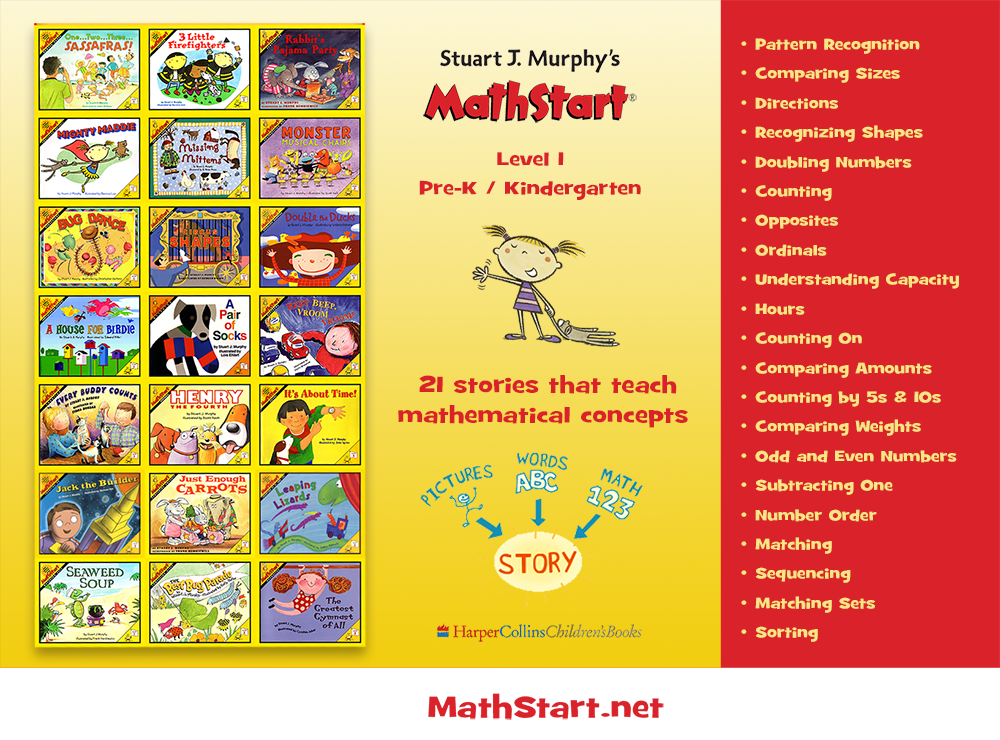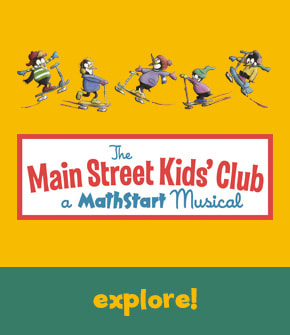When the first MathStart stories were published more than twenty years ago, no one had any idea the series would grow to 63 books! Twenty-one of those stories are for Pre-K / Kindergarten, covering important foundational mathematical skills ranging from recognizing shapes to counting, doubling numbers and pattern recognition. Taken separately, the Level 1 books would rank among the most comprehensive early math series available. In fact, several of our educational distributors sell MathStart books as grouped as sets by level.
By the time they reach preschool age young children are already accomplished visual learners. In fact, from their very first moments babies use visual cues to try to make sense of their surroundings. If you stick your tongue out a newborn, she will stick hers out at you, a perfect mimic of what she sees (and serves your right, too, for sticking your tongue out at a wee one!)
Visual learning is about acquiring and communicating information through illustrations, photos, diagrams, graphs, symbols, icons, and other visual representations.
Visual learning skills include:
By the time they reach preschool age young children are already accomplished visual learners. In fact, from their very first moments babies use visual cues to try to make sense of their surroundings. If you stick your tongue out a newborn, she will stick hers out at you, a perfect mimic of what she sees (and serves your right, too, for sticking your tongue out at a wee one!)
Visual learning is about acquiring and communicating information through illustrations, photos, diagrams, graphs, symbols, icons, and other visual representations.
Visual learning skills include:
|
STORIES
In 1992 I was hired to be the Visual Learning Specialist on the authorship team for a new high school mathematics program—a new role I invented in my quest to have visual representation included from the inception of the development of educational products. The other authors wrote. I sketched. The combination was a visual / verbal presentation of content that supported the way students learn. They could the see the math!
While working on this program, I had the opportunity to visit classrooms and try out my ideas with the ultimate users: the kids. I learned that elementary and secondary school students become much more engaged in math when it is delivered within the context of something that interests them—a setting that shows the math in use. They wanted stories about math!
This was an exciting revelation: If students can see how the math works and understand how it might be used, they are more interested in doing it.
This is certainly true for our youngest mathematicians! Many of the mathematical skills covered in the Level 1 books are skills that young children are already beginning to pick up in their day-the-day lives, such as comparing amounts and creating matching sets. When they see that are actually doing math—and that they are good at it—builds confidence.
Pictures. Words. Math. What a powerful combination!
RELATED:







 RSS Feed
RSS Feed




